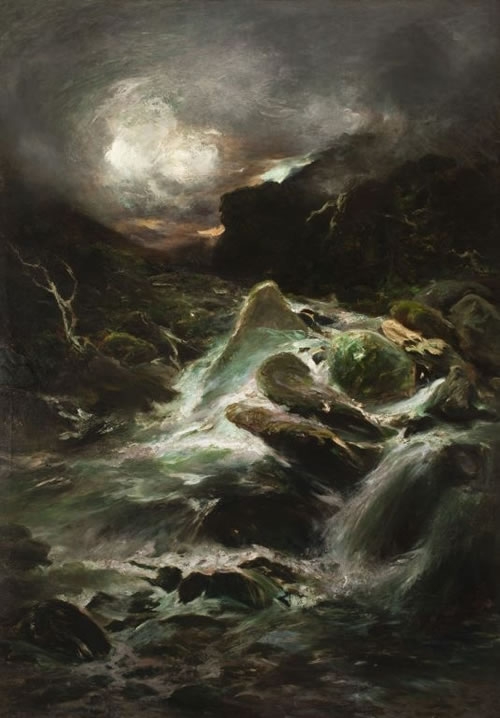
Otira Gorge, 1912, by Petrus van der Velden.
Petrus van der Velden (1837–1913) arrived in Christchurch from The Netherlands in 1890. He had been associated with the Hague School of realist painters who concentrated on portraying modern life, particularly the life of the poor and downtrodden. In New Zealand, van der Velden made his most enduring contribution as a landscape painter. He was particularly taken by the sublime and powerful landscape of Ōtira Gorge and produced a number of works with this as his subject.
Leonard H. Booth, a pupil of van der Velden’s, recalled the artist’s working methods:
When I was last at Otira, a resident of the place who remembered van der Velden told me that the Dutchman was evidently quite mad. Evidently? Yes; because at all those times when the thunder rolled, and wind howled, and rain poured, van der Velden would go into the Gorge, whereas all those times when the sun shone from a cloudless sky, he would lie with his back to the grass near the hotel and sleep.
Van der Velden portrays the landscape as wild and untamed, stormy and brooding. The powerful torrents of water represent a work of God untouched by man. Van der Velden’s images of Ōtira Gorge epitomise the sublime style in painting.

Community contributions